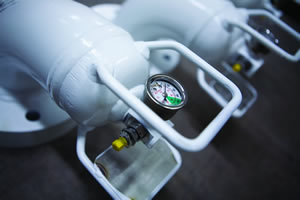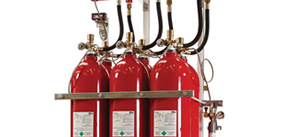Reliable Fire has the experts in explosion suppression systems helping you to minimize the risk of industrial explosions. An industrial explosion can occur during the manufacturing processes of different materials such as corn, flour, wood dusts, pharmaceuticals, plastics, sugar and others. Manufacturing processes may include transporting, grinding and storage, to name a few. It is critical to know what kind of environment your employees are working in and any by-products that may result from the work they perform. Reliable Fire & Security provides the equipment and systems you may need to minimize the risk of industrial explosions. Our industry experts will assist you in planning your system from inception to installation. Explosion testing, explosion venting, suppression and isolation systems are some of the options available for your organization.
An explosion suppression system consists of four components:
- Detector
- Control Unit
- Suppressor
- Confined Space
Preceding a deflagration, a pressure wave ripples out from the epicenter of the explosion. Explosion suppression systems use pressure sensor detectors to detect and act upon the developing explosion. A good pressure sensor will detect a sharp increase in pressure in one millisecond. The control panel receives the detection signal from the pressure sensors and then sends a release signal to the container holding the fire suppressant. The elapsed time from receipt of detection to transmission of the release command is less than one millisecond.
Fire suppressant containers release the agent at the command of the control panel. Since explosion pressures can reach dangerous levels in less than 50 milliseconds, the agent must be released and dispersed in a matter of milliseconds. Suppressant agents typically include Carbon Dioxide, FM-200, and water mist.
An explosion suppression system may also contain a mechanical or chemical isolation system to prevent flame or pressure from traveling though connected ducts or piping into other process equipment. Isolation is usually complete within 5 milliseconds of detection.
Benefits of Explosion Suppression Systems
In many cases, venting remains the optimal choice for explosion suppression. However, venting is often used in conjunction with explosion suppression systems. There are a number of benefits with explosion suppression systems:
- Extinguishes fire within the equipment preventing fire damage

- Prevents pressure piling and secondary explosions
- Complies with NFPA standards preventing venting of explosions indoors
- Retains toxic or valuable materials within the process equipment
- Integrates with the process controls to enable other protection systems
- Suppresses class ST III dust hazards
- Uses gas cartridges instead of explosive devices to release suppressant
- Provides more flexibility in fire protection strategies
When Explosion Venting is Not Possible
There are circumstances where venting is impractical and a suppression system is preferable. These include facilities where:
- The protected equipment is indoors
- The explosive material has a high KST or is a hybrid
- Insufficient available area on the equipment for adequate venting
- Process material is toxic and can’t be vented into the atmosphere
- No safe place to vent
- High flame propagation possibility though interconnections
Our professionals have more than 30 years of industry experience that guarantees you the most effective and efficient system based upon your unique needs.

